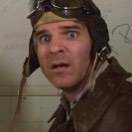Post Maintenance Test Flight
-
Members Online
- 00-Negative
- 201Mooniac
- PT20J
- 1980Mooney
- daytonabch04
- Yooper Rocketman
- varlajo
- Flyler
- Deb
- Electro
- MikeOH
- Hank
- georgewdean1020
- N201MKTurbo
- Frank B.
- midlifeflyer
- emiliocastelli
- MatthiasArnold
- Rwsavory
- skykrawler
- phrogpilot73
- Matthew P
- PeteMc
- eman1200
- alexz
- AME
- phxcobraz
- shawnd
- Danb
- ChuckSchneider
- pirate
- ToddCC22
- dkkim73
- Mark Staggs
- bloghill
- peterl
- Schllc
- MDMooney
- PeytonM
- TCC
- MB65E
- DrumGuruEC
- hammdo
- Ragsf15e
- aceaviationcenter
- Guy123
- Justin Schmidt


Recommended Posts
Join the conversation
You can post now and register later. If you have an account, sign in now to post with your account.